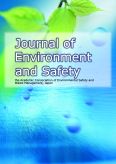Volume 3, Issue 2
Displaying 1-6 of 6 articles from this issue
- |<
- <
- 1
- >
- >|
Original Articles
-
2012Volume 3Issue 2 Pages 2_87-2_95
Published: 2012
Released on J-STAGE: October 26, 2012
Download PDF (1233K) -
2012Volume 3Issue 2 Pages 2_97-2_104
Published: 2012
Released on J-STAGE: October 26, 2012
Download PDF (1094K) -
2012Volume 3Issue 2 Pages 2_105-2_120
Published: 2012
Released on J-STAGE: October 26, 2012
Download PDF (816K)
Topics & Report
-
2012Volume 3Issue 2 Pages 2_121-2_126
Published: 2012
Released on J-STAGE: October 26, 2012
Download PDF (1343K) -
2012Volume 3Issue 2 Pages 2_127-2_132
Published: 2012
Released on J-STAGE: October 26, 2012
Download PDF (473K) -
2012Volume 3Issue 2 Pages 2_133-2_137
Published: 2012
Released on J-STAGE: October 26, 2012
Download PDF (356K)
- |<
- <
- 1
- >
- >|
